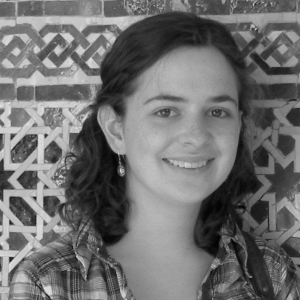

4 Questions to Ask Yourself for Successful Seating Charts
September 26, 2017
“So, when are we moving seats?”
I get this question about once every six weeks, and it works like an unofficial alarm clock: I know that within about two or three weeks, I’d better have new seating charts, or be ready to face the consequences. A lot of my high school colleagues simply don’t bother with seating charts for the same reason that I always put off making new ones until the last minute: making seating charts is time-consuming, frustrating, and can seem like a bigger headache than it’s worth. But I’ve persisted with seating charts for every year that I’ve taught, because I find that, while sometimes challenging and difficult, seating charts more than make up for it with how much they help with classroom management.
In order to get the most benefit out of a seating chart, you can’t just hit “randomize” in your grading program and assume it’ll all work out. To be ideal, seating charts require some time and consideration to be a tool. While I usually rely on the good old alphabet for the first seating charts of the year, I make personalized charts as soon as I get to know my students. Here’s what I think about when I’m drawing them out.
1. Which students are the highest priority?
This will vary depending on the class, but could include kids with special needs or vision difficulties, a set of friends who talk to each other constantly, a couple of kids who won’t leave each other alone (for good or bad). These are the kids who you might struggle with the most: the reason why they’re “highest priority” is because your relationship with them can dramatically influence the tone of your classroom. Often, my list has no students with diagnosed special needs--and it’s usually no longer than two to six students.
I always place these students on the seating chart first. If a pair of friends won’t stop talking if they can see each other (no matter what else you might have tried), and their conversation is disrupting class, then those are “high priority” kids. Put them on opposite sides of the room before you put anyone else down. Put kids who need your support and intervention in the front of the room, so it’s easy to give them quiet, supportive redirection that doesn’t take away from the flow of class.
This list should really be fairly short. If you find yourself inclined to write down ten or more names, consider whether or not some of those names are “higher” priority than some of the others. While you’ll want to consider all of these students’ placement carefully, save the first round of seating for the students that need it the most.
2. Who is on the second-level priority list?
This is for students who didn’t quite make it onto your “high priority” list, students with vision or hearing challenges, and potentially, students with special needs (as their accommodations indicate). Place these students strategically around. Make sure you follow any accommodations in I.E.P.s or 504 plans, but this “second-level priority” list can include a lot of other factors. Do you have some loud personalities that dominate quieter ones? Separate them so that everyone feels comfortable. Is there a student who sleeps a lot when he’s further away from you? Bring him up to the side or front--somewhere he’ll have a harder time losing focus and you’ll have an easier time waking him up.
3. Where have students been placed before?
Once you have students of first- and second-level priority seated, start to think about the other kids--the ones that tend to do okay no matter where they’re seated. These kids can surprise you with how much they change just based on a little shift, so remembering to move them around is key! I’ve had my desks set up in table groups, debate-style, and in classic rows, and no matter what, kids will get restless if they’ve been in the same spot for too long. I try to never leave kids in the back for two seating charts in a row (unless the back suits them and their learning style), and I try not to keep kids (even the high-priority ones) too close to my desk every time--they get self-conscious and aware of how it can look like a “punishment” to sit close to the teacher all the time.
4. Are there special requests?
I don’t often take student requests--especially if it’s about sitting next to friends! But as the year goes on, I’ll relent somewhat. Especially for students who are shy, or who have indicated a preference to me in the past, I try to remember those as I make my new charts: will this shy student work better if he can sit next to someone he trusts? Can I trust the girl who wants to sit close to the windows to always do her work? Again, I only do this as space and other factors allow, so I never broadcast to my students that I take requests, but I do consider them on a case-by-case basis.
When carefully planned, seating charts can be a great classroom management tool. I have never been tempted to go away from them, no matter how old my students or how well-behaved the class. It saves me from having to discipline students as often, allows me to have more positive interactions with them, and is a built-in way to manage student-to-student conflict without too much stress and drama. Changing them every few weeks keeps kids alert and helps them meet new people, and it can help you get to know your students even better than you already do.

 Article by Alison McCartan, regular contributor to The Heritage Institute's Blog, What Works: Teaching at Its Best.
Article by Alison McCartan, regular contributor to The Heritage Institute's Blog, What Works: Teaching at Its Best.
Alison McCartan is a high school teacher in the South Puget Sound region of Washington State. She has taught English and history in high schools across the country, and when she's not orchestrating re-enactments of the Industrial Revolution in class, she can usually be found with a cup of tea, her cat, and a book.




